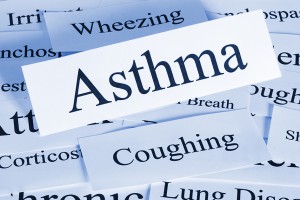WHEN YOU INHALE YOU BREATHE IN AIR ALONG WITH ANY
PARTICLES THAT ARE IN THE AIR
The air and the particles travel into your respiratory system (your lungs and airway).
_____________________________________________________________________________
OTHERS FACTORS THAT CAN AFFECT HOW  DEEP INTO THE LUNGS PARTICLES GO:
DEEP INTO THE LUNGS PARTICLES GO:
- Mouth or nose breathing – Breathing through your mouth allows particles to travel deeper into your lungs.
- Exercise – While exercising, particles can travel deeper.
- Age – Older people breath less deeply so particles may not get as deep.
- Lung disease – If lung diseases block the airway, particles will not travel as far.
- Weather – (temperature).
- Other pollutants in the air
Your body responds to the particulate invasion! – Along the way the particles can stick to the sides of the airway or travel deeper into the lungs. The farther particles go, the worse the effect.
Our lungs produce mucous to trap the particles, and tiny hairs wiggle to move the mucous and particles out of the lung. You may notice something in the back of your throat (this is the mucous); the mucous leaves the airway by coughing or swallowing. If the particle is small and it gets very far into the lungs, special cells in the lung trap the particles and then they can’t get out and this can result in lung disease, emphysema, lung cancer.
PARTICULATE MATTER PM10 AND PM2.5
Particulate matter (PM10 and PM2.5) is a complex mixture of non-gaseous particles of varied physical and chemical composition. It is categorised by the size of the particle (for example PM10 are particles with a diameter of less than 10 microns (μm)).
Most PM emissions in London are caused by road traffic. In Central London this is as much as 80(%), with exhaust emission and wear, tyre and brake wear and dust from road surfaces being the main sources.
Construction sites, with high volumes of dust and emissions from machinery are also major sources of local PM pollution, along with accidental fires and burning of waste. However, a large proportion of PM originates outside of London (between 40 – 55%) and includes particulates from natural sources, such as sea salt, forest fires and Saharan dust, as well as from sources outside London caused by human activity.
Similarly London also exports PM to other parts if the UK and Europe. Small particles tend to be long-lived in the atmosphere and can be transported great distances (PM2.5 can reach London from sources such as the Sahara up to 8,000 km away).
HEALTH EFFECTS
Both PM10 (big) and PM2.5 (small) particles can cause health problems; specifically respiratory health (that’s the lungs and airway). Because the PM2.5 travels deeper into the lungs AND because the PM2.5 is made up things that are more toxic (like heavy metals and cancer causing organic compounds), PM2.5 can have worse health effects than the bigger PM10.
Exposure to particulate matter leads to increased use of medication and more visits to the doctor or emergency room. Health effects include the following:
- Coughing, wheezing, shortness of breath
- Aggravated asthma
- Lung damage (including decreased lung function and lifelong respiratory disease)
- Premature death in individuals with existing heart or lung diseases

